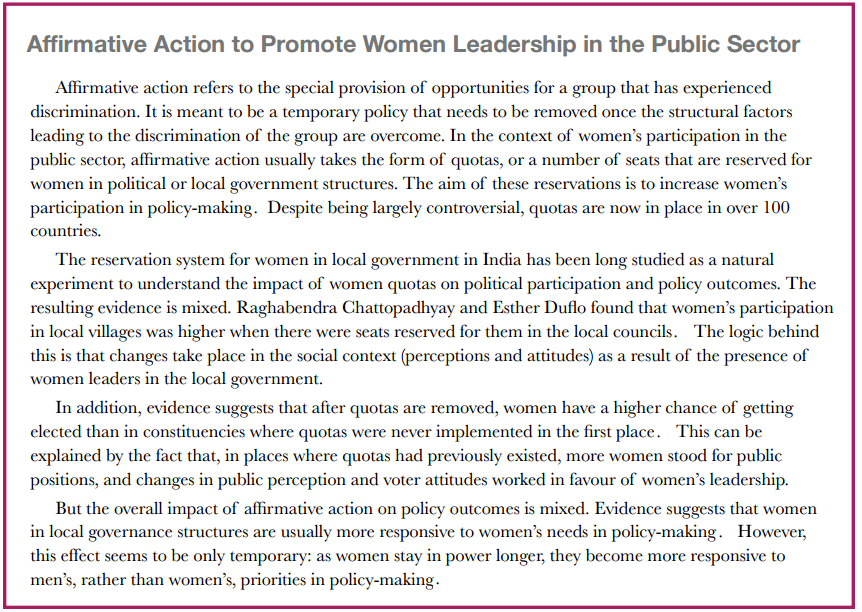
Women contribute to a broad range of issues when they participate in public policy. Research shows, for example, that higher female participation in political parties leads to greater prioritisation of issues that impact health. Women are also more likely to work across parties than men, and their involvement with peace agreements and post-conflict reconstruction enhances the chances of long-term success in peace-making. Despite these and many other documented contributions of women to policy-making, Asia still lags behind in female representation in the public sector.
A United Nations Development Programme (UNDP) report, Power, Voices and Rights, focused on the barriers to women's political participation and engagement. Three broad areas were identified: stereotypes of women's roles, political barriers, and economic barriers. Stereotypes refer to women's traditional roles, which are often limited to the private sphere and associated with reproductive and caretaking activities. Political barriers are associated with male domination of politics, along with the practice of ignoring or overlooking women's perspectives. Finally, economic barriers are associated with women's lower ownership of productive resources and assets, which hinders their political engagement because economic resources are usually required for political campaigning.
There is a conventional wisdom that equates economic development and democracy as the solution to the problem of women's political participation. However, economic development and democracy are only necessary, but not sufficient, variables. For instance, in Afghanistan, a very poor and conflict-ridden country, women occupy 26% of the national parliament. This contrasts sharply with Japan, a democratic and highly developed state, where only 8% of the parliament are women. What this underlines is the need for design and intentionality. Specifically, targeted and intentional engagement must happen to augment the participation of women as leaders in the public sector. This might include mentoring for women at different stages in their political careers; financial support; and other support (especially from male leaders) to create space for women in the political sphere. Finally, as the UNDP report notes [the] development type, political transitions, existing gender roles, and power relations demonstrate that there are many layers [and] many complexities in promoting women's participation in the public sector.

This is an excerpt from a report of "Women leaders and the new Asian century", a 2014 conference organised by the Lee Kuan Yew School of Public Policy, in partnership with Microsoft Corporation, Oxfam International and The Rockefeller Foundation.